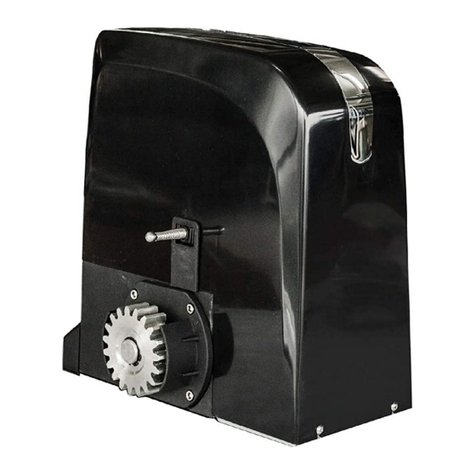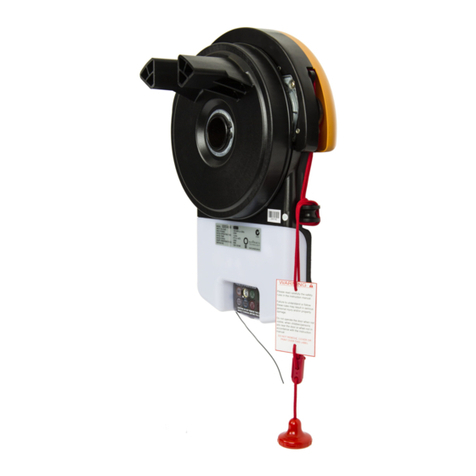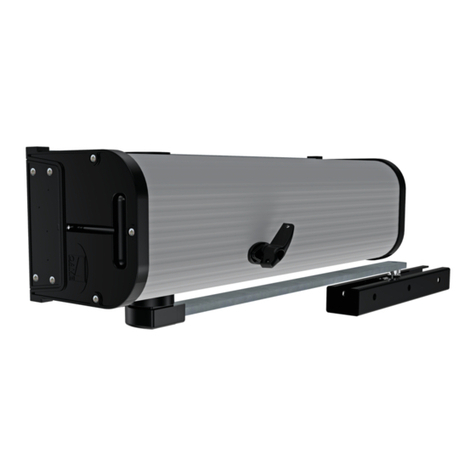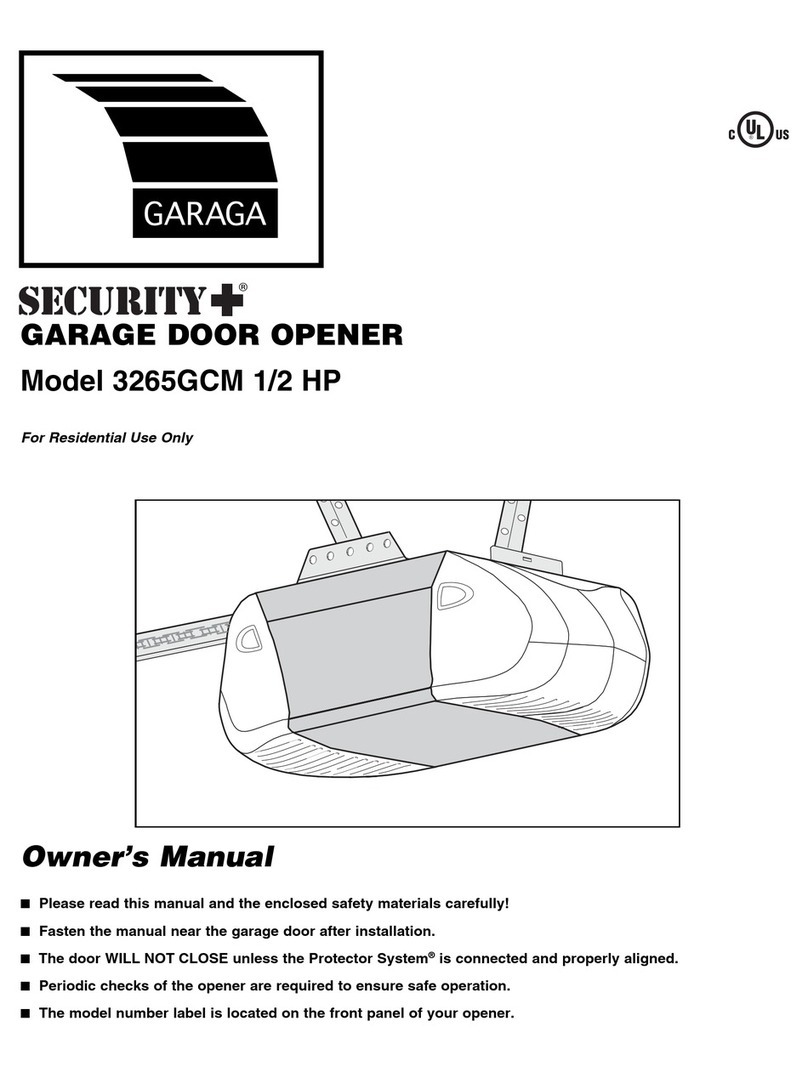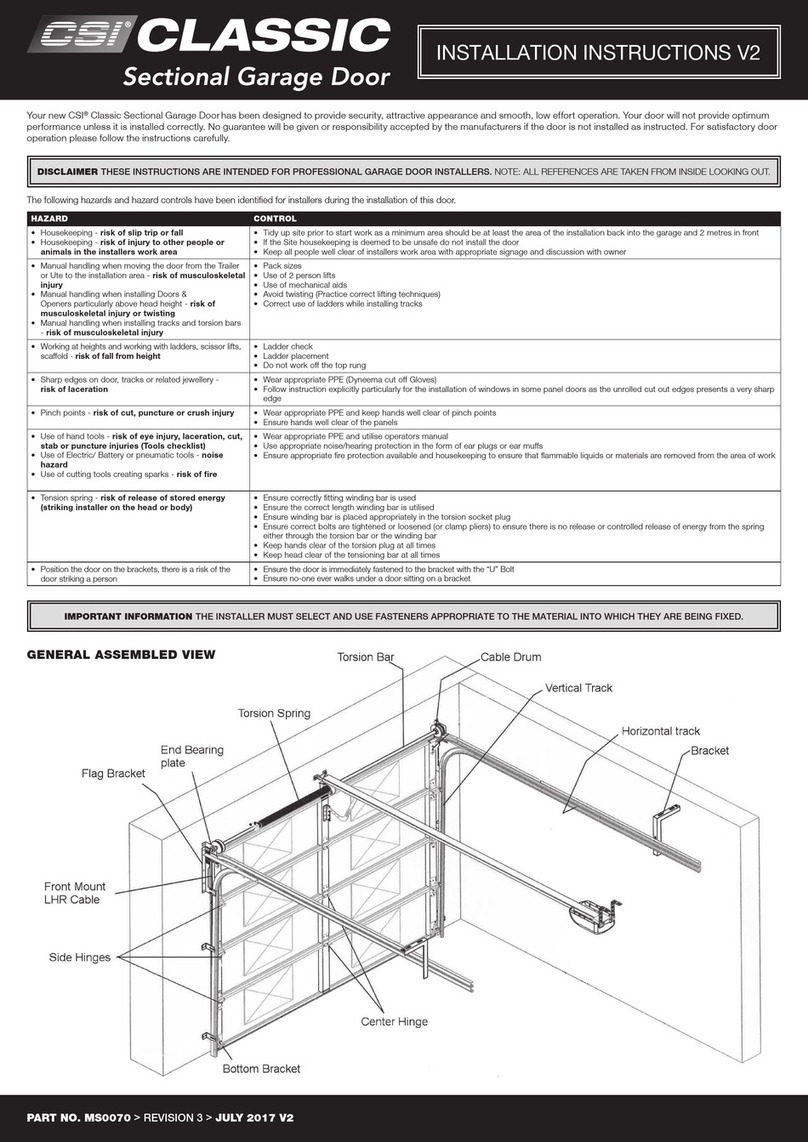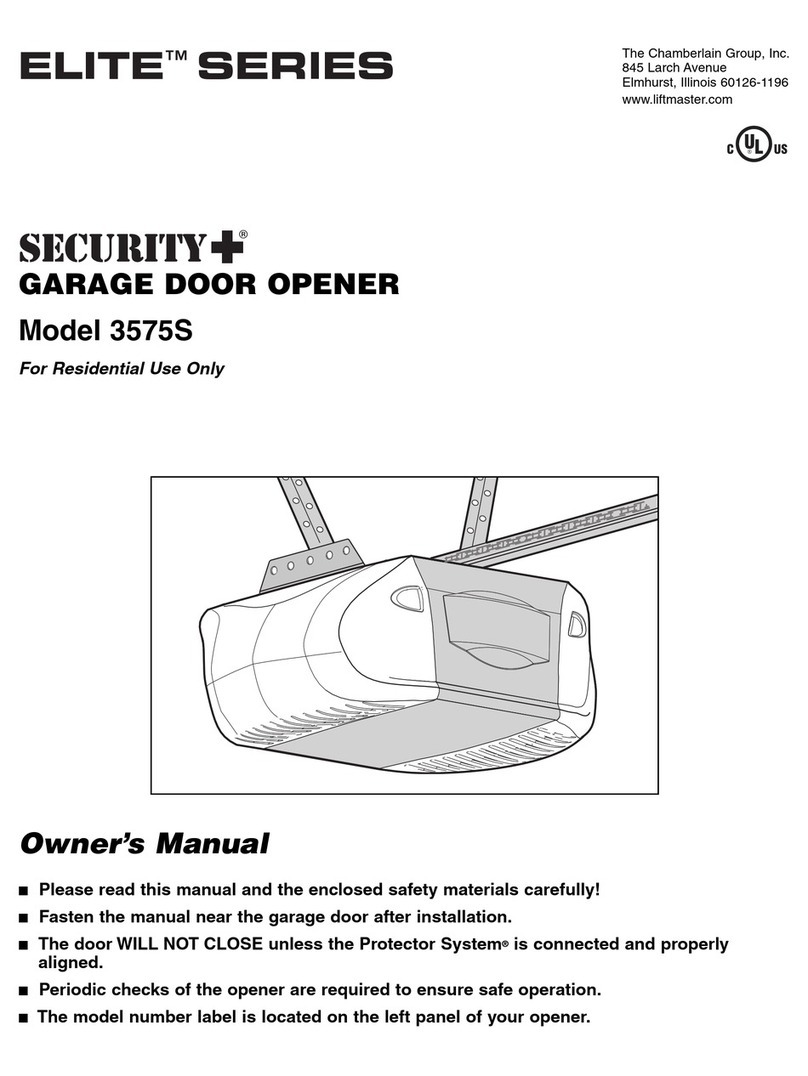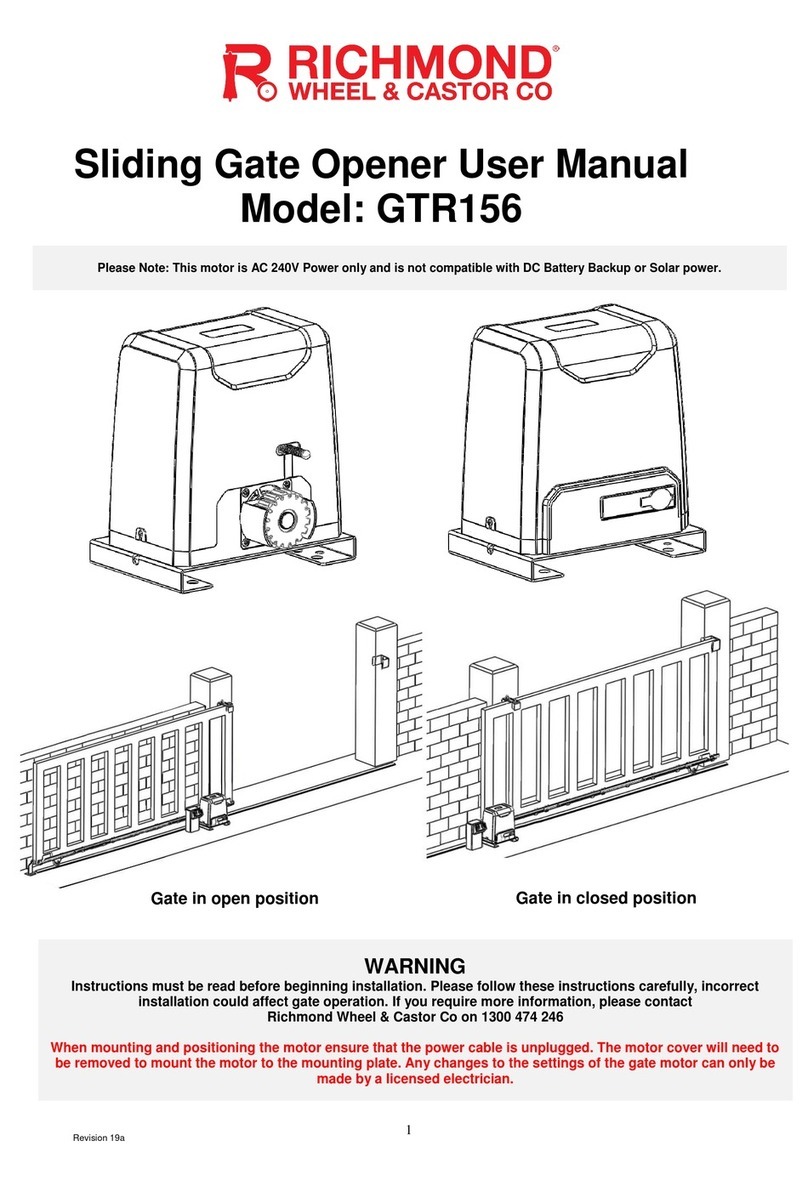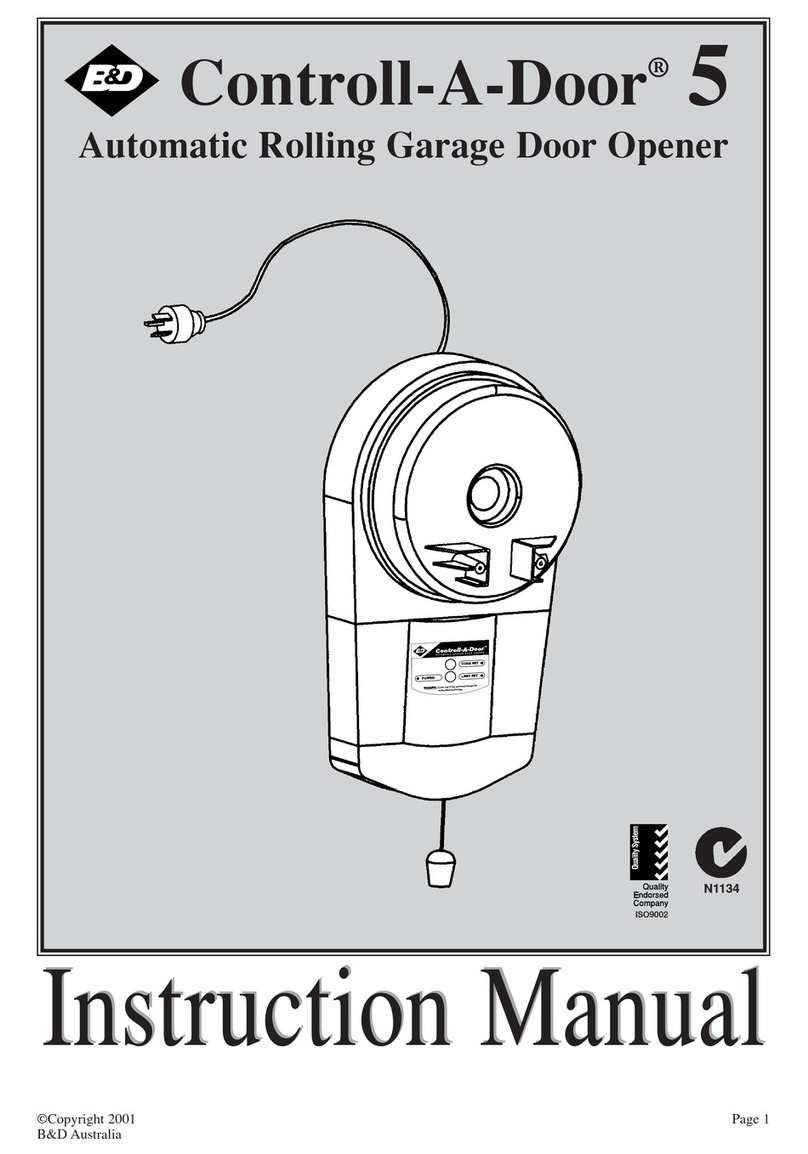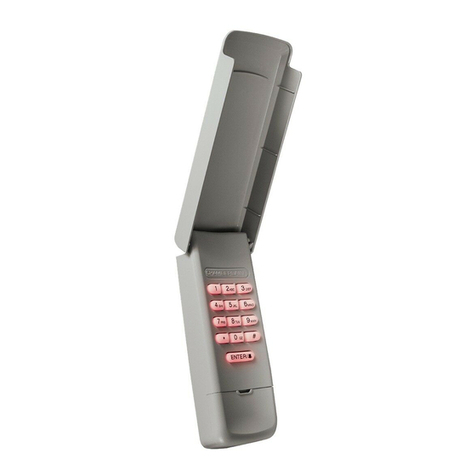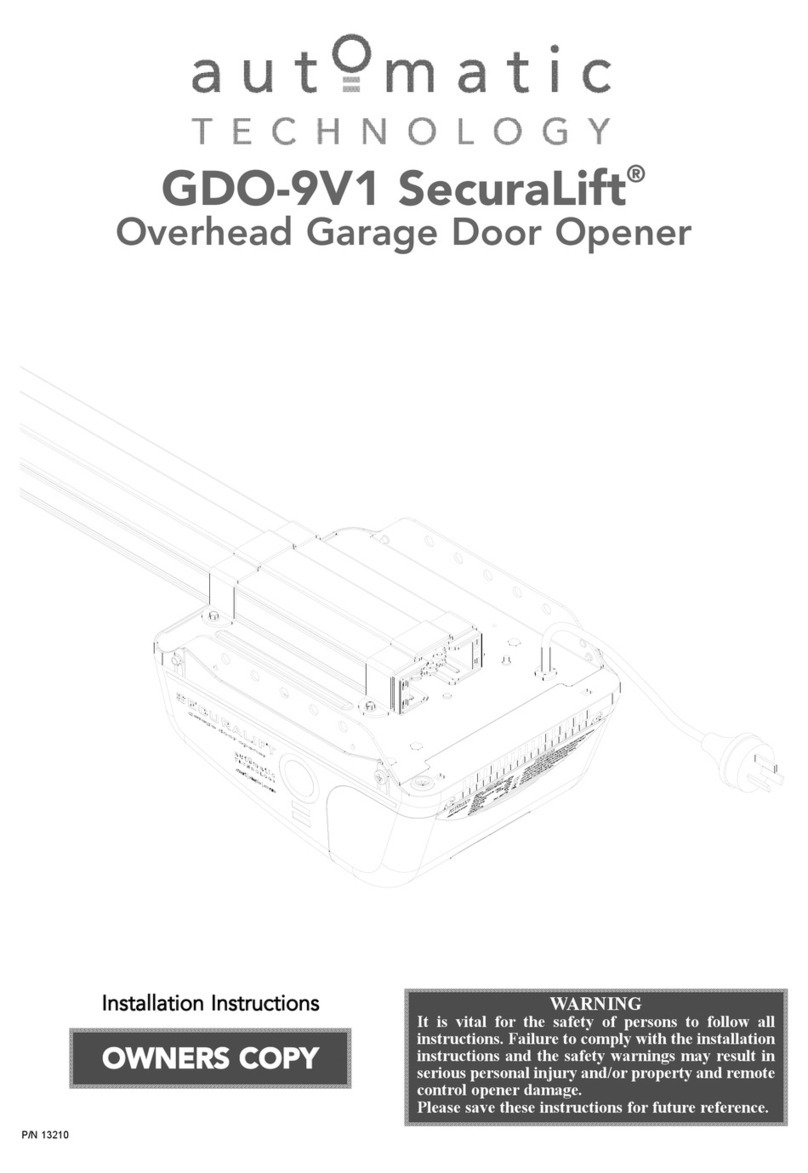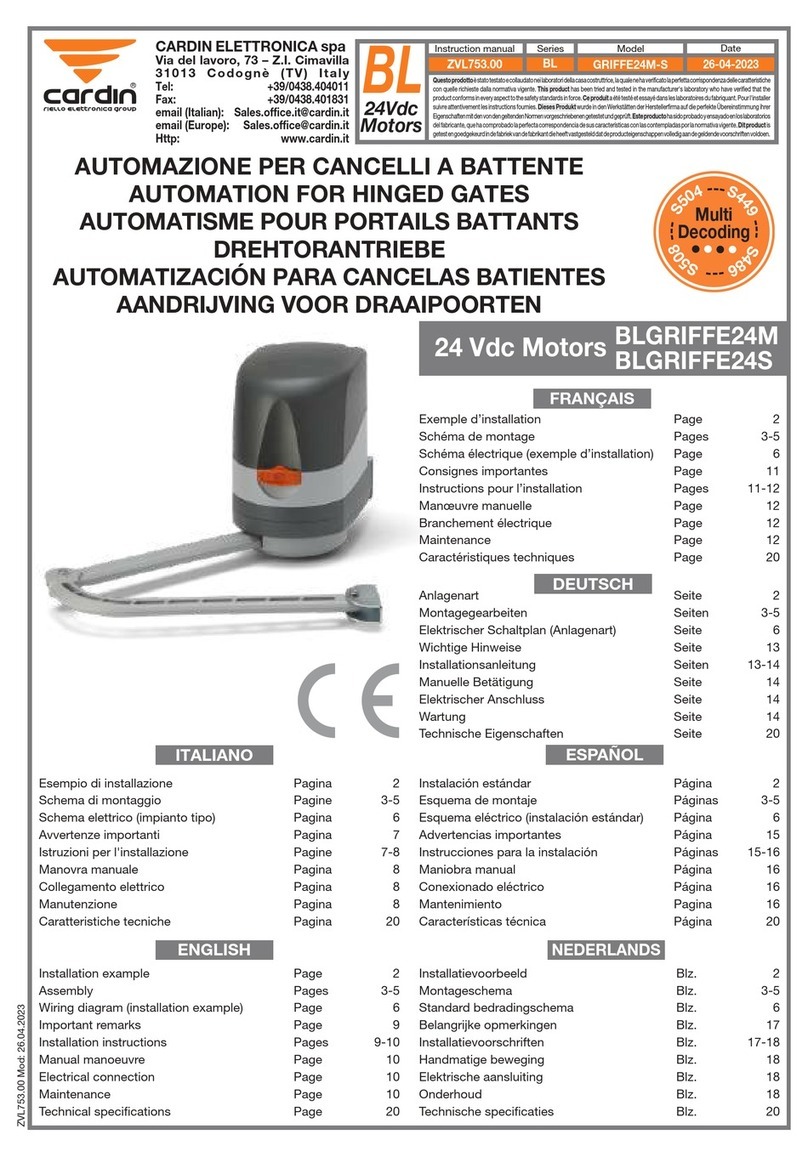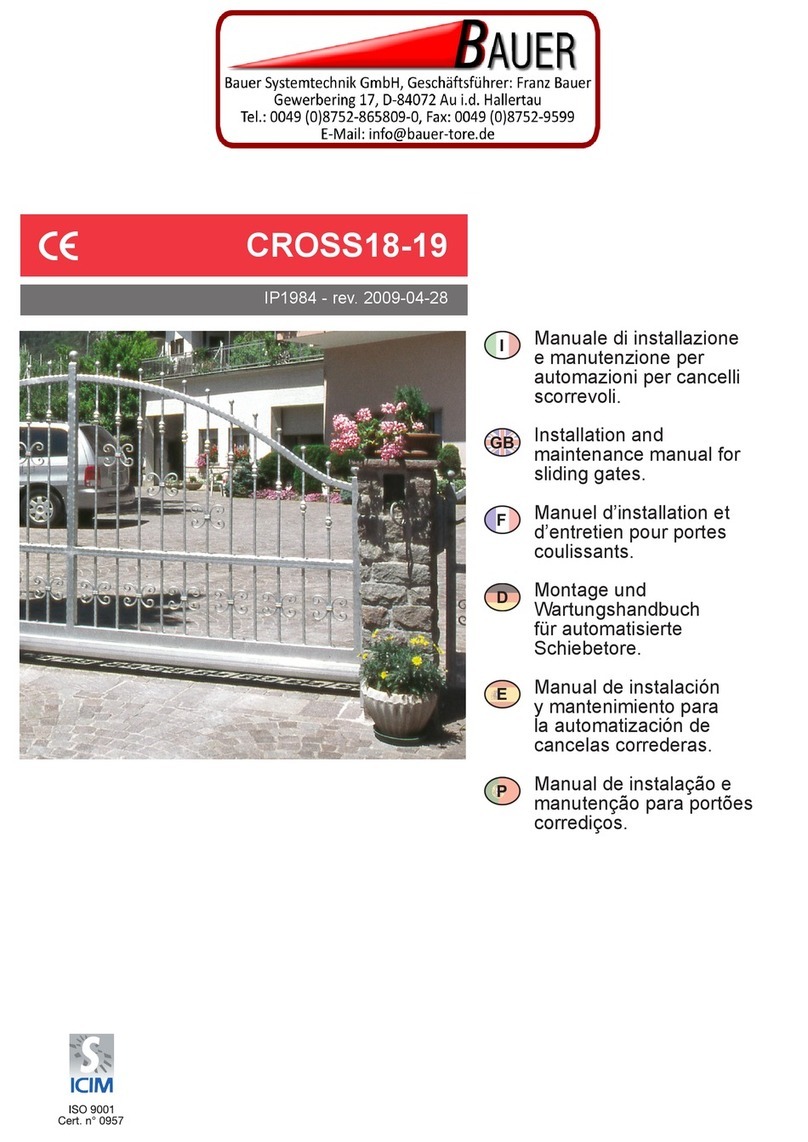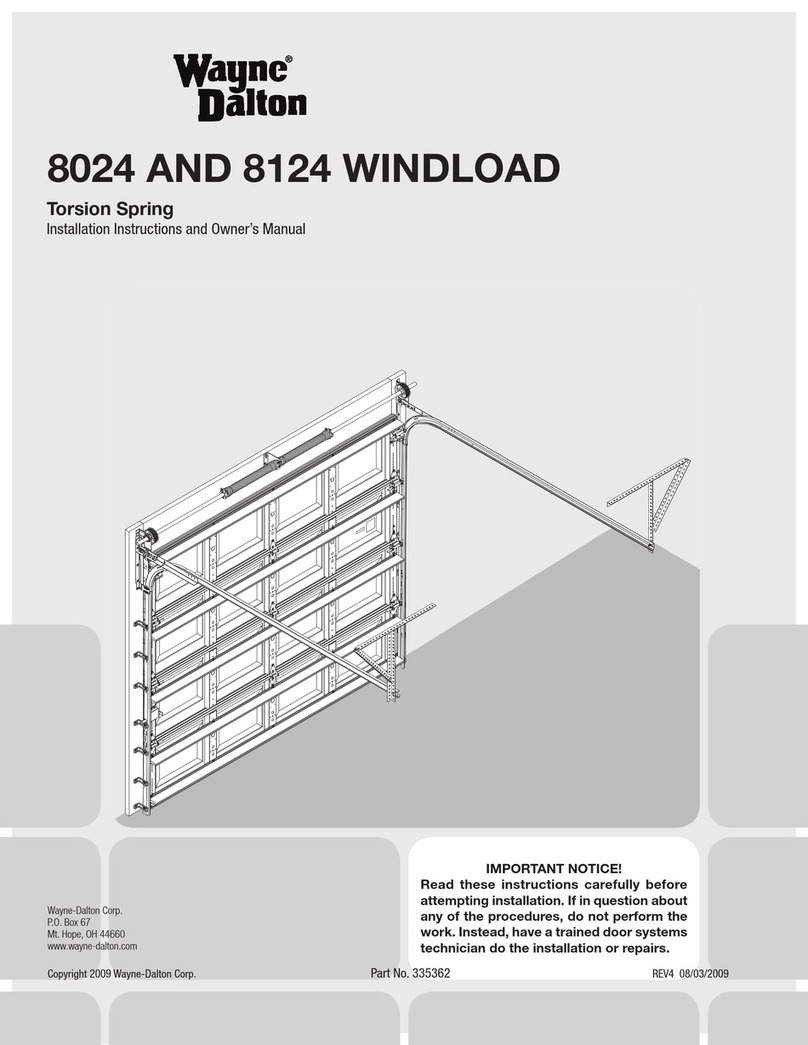
Z 5Z 5 “ D oor way L ear n” is O N
Ref section 7, Dip Switch Settings.
Green LED blinks for 37s as the “door learn” process is carried
out. Door opens/closes.
Upon power ON, the Red LED
indicates a door open relay output to
begin the doorway learn process.
Door learn process complete,
sensor in standby mode.
“ D oor way L ear n” is O F F
Ref section 7, Dip Switch Settings.
Upon power ON, the solid green LED turns on indicating
that the sensor is in standby mode and ready to detect.
Presence Detection: It takes 10s after sensor power up
for presence detection to be initiated on all rows of
detection.
If before 10s has elapsed someone walks into the detection
area it will take about 5s after the person leaves the
detection zone for presence detection to be functional.
9. APPL Y I NG POW E R AND T HE “ DOOR W AY L E AR N” SE T T I NG
Note
When carrying out the following work, turn off sensor power.
When the floor condition is changed by placing a mat on the floor etc.
When the detection area pattern or sensor sensitivity is adjusted.
When Doorway Learn is turned ON, the sensitivity level of the inner row of detection is only at maximum when the outer
rows of detection are activated.
Red solid LED Green blinking LED Green blinking LEDGreen solid LED Green solid LED
CAUTION
!
General Caution:
Technical problems with the sensor are indicated by a flashing Green/Red LED. The frequency of flashing
indicates the type of problem as explained below.
13. SELF DIAGNOSTICS ERRORS
11. TIMING CHART OF EVENTS
After installation is completed “walk test” the sensor detection area. If the detection area is not as expected adjust the
detection area as referred to in section 8 or increase the rows of detection using Dip switch X 3 & 4
If the detection area is still not as expected then the sensor sensitivity can be increased by turning the potentiometer
clockwise. When the sensor detects even though there is nothing in the detection area the sensor sensitivity can be
decreased by turning the potentiometer in the anti-clockwise direction.
Sensitivity
LH
10. VERIFICATION OF OPERATION
When carrying out door maintenance work with power applied to the
sensor on door controllers that are wired to “test” the sensor ensure to
set the dip switches as below.
12. DOOR MAINTENANCE WORK
Note
NON-DETECTION
DETECTION a s
response to TEST
POWER OFF
1234
5
1234
5
1234
5
DETECTION NON-DETECTION
TEST RESPONSE
1234
5
T1 T2
NON-TEST TESTTEST
Test Input
Yellow
Blue
Yellow
Blue
Yellow
Blue
Yellow
Blue
Yellow
Blue
Yellow
Blue
Yellow
Blue
Yellow
Blue
Yellow
Blue
Yellow
Blue
Safety Output Row 1, 2 / Test Input
Activation Output Row 2, 3, 4, 5
1234
5
Yellow
Blue
Yellow
Blue
TEST NON-TESTNON-TEST
OFF
6
ON
3
N.C.
Dip Switch Y
Dip Switch Z
NON-DETECTION
POWER OFF
1234
5
DETECTION
White
Green
White
Green
White
Green
White
Green
White
Green
White
Green
1234
51234
5
2
N.C.
Dip Switch Z
Keep in mind to return the dip switch settings to their original
state once door maintenance work has been carried out.
N.O.
N.O.
Flash
Frequency
Red
Green
Red
Green
Fast
Slow
LED Cause
Please replace the sensor.
T1 :10±1 mSec App
T2 :11±1 mSec App
Sensor
Brown
Gray
Break the current
flow on test state.
Supplying DC12 to 24V, make current flow from
Gray to Brown.
Sensor
Brown
Gray Sensor
Brown
Gray
ON
1234
Refer to [7.Dip Switch Settings].
Dip Switch X
2s
1 2 Low
Ref.
4
Presence Detection: During the “Doorway L earn” process the outer 4 rows of detection on the sensor switch from
motion detection to presence detection 10s after power ON. T he inner “door learn” row of detection will switch
from motion to presence detection after the “doorway learn” process is carried out.
“ Door way L ear n” F ailur e & Recovery: If a person enters the detection area during the “doorway learn” process it
may not be successfully completed. In this case the sensor will carry out the doorway learn process on door
activations by a person in order to build an accurate image of the door open and door close position.
14. TROUBLESHOOTING
Detection row “R OW 1” (“ROW2”when “Doorway
Learn”is turned ON) is focused too close to the door.
LED Status Possible Cause Solution
Door does not open when a
person enters the detection
area.
OFF
Door opens and closes for no
apparent reason (Ghosting).
Object moving in the detection area.
Sensitivity too high for the installation environment.
Dust, frost or water droplet on the sensor lens.
Detection area overlaps with that of another sensor.
ORANGE
Door opens and remains in the
open position.
Detection area changed, while ∞ infinity
presence timer setting is in use.
ORANGE blinking
(Slow) Door Hold (Dip switch Z 4 set to Open).
Detection of falling snow, insects, leaves etc.
RED Incorrect sensor wiring.
Reflected signal saturation. Remove highly reflective objects from the detection
area, or lower the sensor sensitivity.
Remove
the
moving object from detection area.
Reduce the sensor sensitivity.
Wipe the sensor lens clean and install a weather cover if necessary.
Ensure different frequency setting for each sensor.
Turn monitor mode Dip switch Z 3 to “Snow”.
Adjust detection depth of Inner 3 rows away from the door.
Re-power the sensor or change the presence timer settings to 30s or 60 s.
Turn “Door Hold” Dip switch Z 4 to Auto.
When Door opens or closes,
LED ORANGE.
Door Opens RED
Door Closes
GREEN
Problem
Sensor Connector not connected correctly.
Incorrect power supply voltage.
Incorrect sensor wiring.
Apply proper voltage to the sensor. (AC/DC 12-24V)
Tighten or reconnect the connector.
Double check sensor wiring.
Double check sensor wiring.
< Disclaimer > The manufacturer cannot be held responsible for below.
1. Misinterpretation of the installation instructions, miss connection, negligence, sensor modification and inappropriate installation.
2. Damage caused by inappropriate transportation.
3. Accidents or damages caused by fire, pollution, abnormal voltage, earthquake, thunderstorm, wind, floods and other acts of providence.
4. Losses of business profits, business interruptions, business information losses and other financial losses caused by using the sensor or malfunction of the sensor.
5. Amount of compensation beyond selling price in all cases.
Activation Output
Test Input Setting
Safety Output
Confirm that the sensitivity potentiometer is set to
maximum and re-power the sensor.
If the error persists, set
Dip Switch Y 4 to “ L ow R eflection” .
GREEN/RED
SLOW FLASH
Reflection of the transmitted infrared signal from
the floor is too low.
Increase sensor sensitivity or change the “R eflection Diagnostics”
Dip switch Y 4 from “ Normal” to “ L ow R ef” .
GREEN/RED
FAST FLASH Internal sensor error. Replace the sensor.
1 2 3 4
Dip Switch Y
ON





